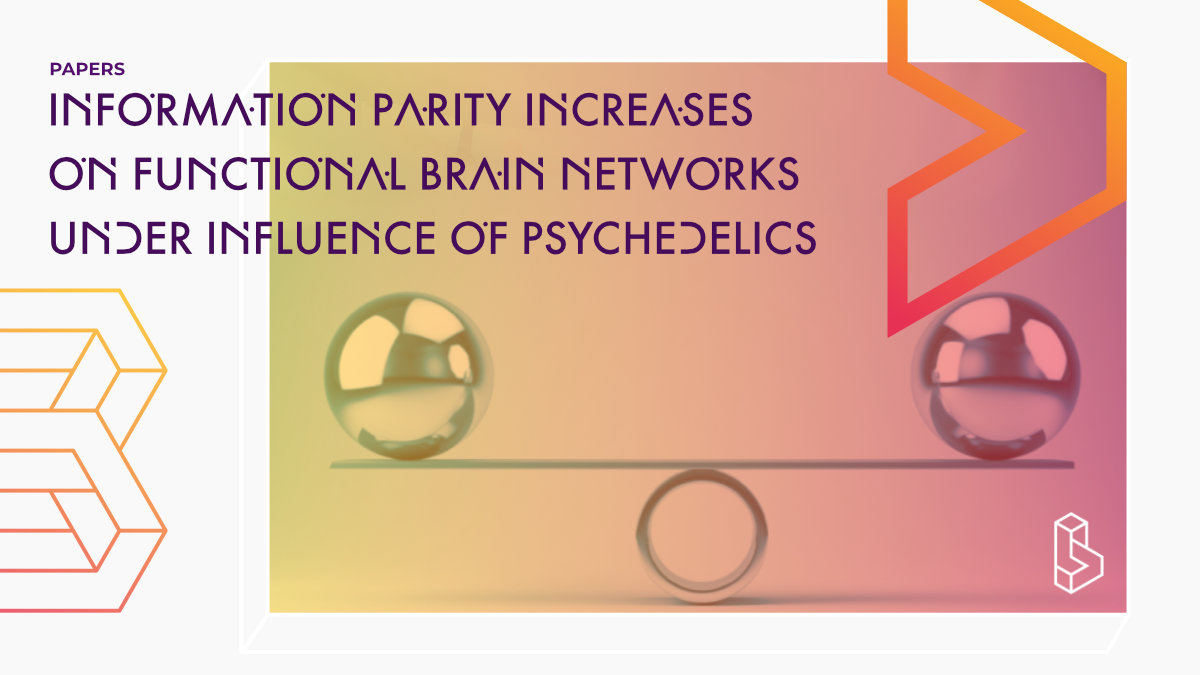This re-analysis (n=7) found that ingesting ayahuasca (100-120ml) led to an increase in the average information parity in the brain networks of individuals, particularly in the limbic system and frontal cortex regions. By comparing resting-state functional brain networks of individuals before and after ingesting ayahuasca, the study utilized complex network theory and calculated pairwise information parity to quantify functional, statistical symmetries between brain region connectivity. The findings suggest that ayahuasca effects may increase the resemblance of statistical influences between pairs of brain regions’ activities to maintain network functional resilience.
Abstract
“The physical basis of consciousness is one of the most intriguing open questions that contemporary science aims to solve. By approaching the brain as an interactive information system, complex network theory has greatly contributed to understand brain process in different states of mind. We study a non-ordinary state of mind by comparing resting-state functional brain networks of individuals in two different conditions: before and after the ingestion of the psychedelic brew Ayahuasca. In order to quantify the functional, statistical symmetries between brain region connectivity, we calculate the pairwise information parity of the functional brain networks. Unlike the usual approach to quantitative network analysis that considers only local or global scales, information parity instead quantifies pairwise statistical similarities over the entire network structure. We find an increase in the average information parity on brain networks of individuals under psychedelic influences. Notably, the information parity between regions from the limbic system and frontal cortex is consistently higher for all the individuals while under the psychedelic influence. These findings suggest that the resemblance of statistical influences between pair of brain regions activities tends to increase under Ayahuasca effects. This could be interpreted as a mechanism to maintain the network functional resilience.”
Authors: Aline Viol, Gandhimohan M. Viswanathan, Oleksandra Soldatkina, Fernanda Palhano-Fontes, Heloisa Onias, Draulio de Araujo & Philipp Hövel
Find this paper
Information parity increases on functional brain networks under influence of a psychedelic substance
https://doi.org/10.1088/2632-072X/acc22b
Open Access | Google Scholar | Backup | 🕊
Study details
Compounds studied
Ayahuasca
Topics studied
Neuroscience
Study characteristics
Open-Label
Re-analysis
Participants
7
Humans
Compound Details
The psychedelics given at which dose and how many times
Ayahuasca 100 - 120mg | 1x
Linked Research Papers
Notable research papers that build on or are influenced by this paper
Shannon entropy of brain functional complex networks under the influence of the psychedelic AyahuascaThis within-subjects study (n=10) investigated the effect of ayahuasca on brain activity. Resting-state fMRI data was broadly consistent with the entropic brain hypothesis which holds that the effects of psychedelics are partially explained in terms of increased entropy of the brain’s functional connectivity.

